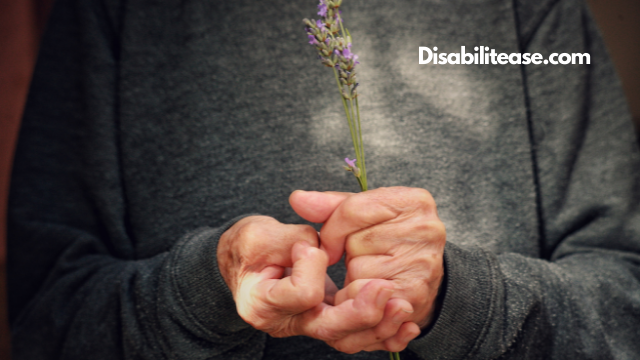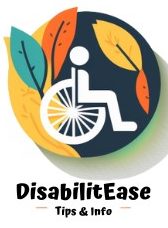
Can Arthritis even be cured? As of now, a permanent cure for arthritis is not available. But various treatments can help the patients efficiently manage the disease.
But before we jump on to discovering what these treatments are, let us first discuss what is arthritis and its several types?
We have a related article for you, you can read Arthritis Symptoms And Causes.
Table of Contents
What Is Arthritis – Can Arthritis Ever Be Cured?
Arthritis is a disease of joints whereby the patient experiences either or all of the following:
- Pain
- Swelling
- Stiffness
How severe is the pain, its point of origin, and several other factors determine its type? It is also a myth that only older people can have arthritis. Age does indeed play a key factor, and the elderly are more vulnerable to such diseases.
Arthritis Can Happen To Anyone
But it does not mean that children or teenagers cannot have it. There are a lot of triggering factors that can render younger people susceptible to arthritis as well. But it is important to note that there are certain types of arthritis to which older people are more vulnerable.
It is advisable to consult a doctor if one experiences pain in or around joints for a couple of days. Only an informed opinion can get one the necessary treatment based on a credible diagnosis.
But even if a doctor successfully diagnoses arthritis, it is still useless to look for a permanent cure because there doesn’t exist one as of yet. However, different treatment techniques can be employed to soothe and alleviate the patients having some specific types.
The time of starting the treatment also plays a significant role. For example, patients can get the benefits of starting treatment of inflammatory arthritis at an early stage.
Different factors can trigger different types of arthritis. But pinpointing the major cause can sometimes be challenging. Many a time, genetics play a vital role in this regard instead of other external factors.
Having arthritis is difficult as it causes pain in joints and makes movements harder due to swelling and stiffness. The symptoms are variable not only in different types, but they also tend to change over time. They can change in weeks and, in some cases, even days. But these symptoms can be managed through proper and timely medical consultation.
The most common medical advice by orthopedicians to any patient with a joint condition is to stay physically active.
What Is A Joint, And How Does It Work?
The meeting point of two or more bones is called a joint. The most commonly found joints in the human body are the fingers, arms, and legs. These joints not only ensure the proper positioning of the bones but also allow free movement.

A capsule filled with thick viscous fluid surrounds most of these joints. This fluid acts as a lubricant, just like in car brakes. It keeps the bones intact with the joint through specialized elasticized bands called ligaments.
This structure is aligned with a smooth, yet strong tissue layer called cartilage. Cartilage allows a smooth movement of bones around each other.
The muscle gets a signal sent by the brain through neurons during movement. As a result, a tendon attached to the bone gets pulled by the muscle, which is how any joint movement occurs.
Main Types Of Arthritis
There are several types of arthritis, each of which has similarities and differences from one other. Let us look into these types and their possible lines of treatment.
One thing which should be kept in mind is that treatment in arthritis is not for the joint itself but is for the root cause which triggers arthritis.
Osteoarthritis
One of the most common types, osteoarthritis, happens when the cartilage gets rough.
There is little noticeable pain initially, but it can eventually lead to pain and stiffness. It mainly affects the following body parts:
- knees
- hands
- hips
- back
Regular exercise and body weight maintenance can keep the effects of osteoarthritis at bay. Treatments may include:
- Painkillers like paracetamol
- Non-steroidal Anti-inflammatory Drugs (NSAIDs)
- Lots of physical activity
- Joint replacement surgery (if the problem persists after all the available treatments).
Gout And Calcium Crystal Diseases
Gout can be particularly nasty for the toes, especially the big ones, as it may cause swelling and severe pain. The primary trigger of gout is uric acid, which can get crystallized and accumulate in the joints if it exceeds a specific limit. However, genetics play an essential role in developing gout as well. Furthermore, it can also be caused by obesity and inactivity.
Paracetamol and NSAIDs can reduce pain and swelling. However, long-term treatment should reduce the amount of uric acid in the body. Medications may include:
- allopurinol
- febuxostat
A similar condition develops when extra calcium in the body is crystallized and gets collected in and around joints. This condition, however, subsides with time. But momentary pain and swelling can be cured through paracetamol and NSAIDs.
Rheumatoid Arthritis
A patient with an auto-immune system can develop rheumatoid arthritis, whereby inflammation occurs in joints due to the immune system attacking healthy tissues. The inflammation happens when extra blood and other fluids flow into an injured area to heal it. But inflammation in rheumatoid arthritis can lead to the following conditions:
- Immovable joints
- Damaged bones, cartilage, and membranes
- Stretched joint capsule leading it to permanent deformity
- Irritated nerve endings
Thus, timely treatment can help one prevent developing a lot of painful symptoms and permanent joint damage. Treatment for rheumatoid arthritis may include:
- Disease-modifying Anti-rheumatic Drugs (DMARDs) to tone the hyperactive immune system
- Biological therapies
Spondyloarthritis
Spondyloarthritis develops around the joints of the spine. The connective tissues are known as entheses swell, which causes this problem. It can also be treated with similar medications, i.e., paracetamol, ibuprofen, and NSAIDs.
- Ankylosing spondylitis
It is a subtype of spondyloarthritis, whereby mineral calcium gets accumulated and causes bone-like structures to grow with the joints in the spine. The treatment is the same as for spondyloarthritis.
Psoriatic Arthritis
Also a subtype of spondyloarthritis, it resembles rheumatoid arthritis in its mode of development. Auto-immunity causes a rash (psoriasis), pain, fatigue, and swelling in & around joints. Treatments may include DMARDs, biological therapies, and creams for rashes.
Juvenile Idiopathic Arthritis (JIA)
JIA is simply arthritis diagnosed before the age of sixteen. Like rheumatoid arthritis, it is also caused by auto-immune conditions, which may lead to pain and swelling in and around joints.
Also, you have to check out my post on How To Relieve Arthritis Neck Pain?
The time of diagnosis is crucial in JIA, with the chances of recovery being better with an earlier diagnosis. Drugs may include painkillers and NSAIDs, which can temporarily end symptoms. However, DMARDs and biological therapies are effective ways to deal with arthritis.

Hi, my name is Eddie, I am a professional trainer specializing in the elderly population and I’m also a website designer. I love training in the gym, going to the beach, traveling, and having good food.
I combined my love for sport and website designing to make “DisabilitEase” whose purpose is to help elderly and disabled people live a more full and active life, have more fun, and enjoy their unique journey despite any disability.



